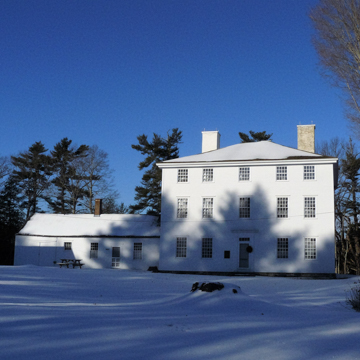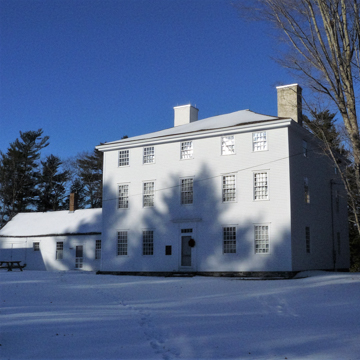Located near the Kennebec River off Cedar Grove Road, the original site of Fort Shirley, the Pownalborough Courthouse is the only existing courthouse building in Maine built before the American Revolution. During the building’s long history it served not only as a courthouse, but also as a residence, church, tavern, dancing school, and post office. Initially erected as the residence of Major Samuel Goodwin, agent of the Plymouth Company and commander of Fort Shirley, his descendants occupied the building for over 200 years. Among the famous Americans associated with courthouse were John Adams (at the time attorney for the Plymouth Company), Robert Treat Paine (signer of the Declaration of Independence), Benedict Arnold, and William Cushing, an attorney at the Pownalborough Courthouse in 1775 whom President George Washington later appointed to the United States Supreme Court.
The Kennebec Proprietors commissioned the courthouse on the occasion of the founding of Lincoln County in 1760. The simple Georgian courthouse was designed and built by Boston architect Gersham Flagg, who was himself a Proprietor and had previously designed Fort Western in Augusta. Begun in 1761, the three-story building was not fully finished until 1769. The five-bay, hipped-roof, wooden (originally shingled) structure measures 45 feet long and 44 feet wide. Almost all the boards used in the courthouse construction are 18 by 20 inches wide. The courtroom, 45 feet long and 20 feet wide, is located on the second floor. Although originally designed as a single courtroom with boxes and benches, as built it was divided into two rooms. The first floor accommodated not only family residential space, but also a tavern, and the third floor provided commodious additional living quarters. In total there were 12 rooms, four on each floor and each measuring 18 x 18 feet, located on either side of a central hall. Each room was heated by a fireplace connected to one of two large end chimneys. Two of the first-floor fireplaces were especially large.
Few changes have been made to the courthouse. A one-story ell was added in the nineteenth century and an old carriage house—in fair condition—sits a few yards from the house; the large barn that once sat 80 yards from the house was demolished in the 1960s. Over time the interior was covered with lathe and plaster, but no electrical fixtures or modern heating were ever installed. When the Lincoln County Courthouse and Historical Association purchased the courthouse in 1954 they stripped the interior and restored it to its original state. The present white-clapboarded building is now a museum.
References
Briggs, John W., “Pownalborough Courthouse,” Lincoln County, Maine. National Register of Historic Places-Inventory, Nomination Form, 1969. National Park Service, U.S. Department of Interior, Washington, D.C.
Taylor, Alan. Liberty Men and Great Proprietor: The Revolutionary Settlement of the Maine Frontier, 1760-1820.Chapel Hill: University of North Carolina Press, 1990.























